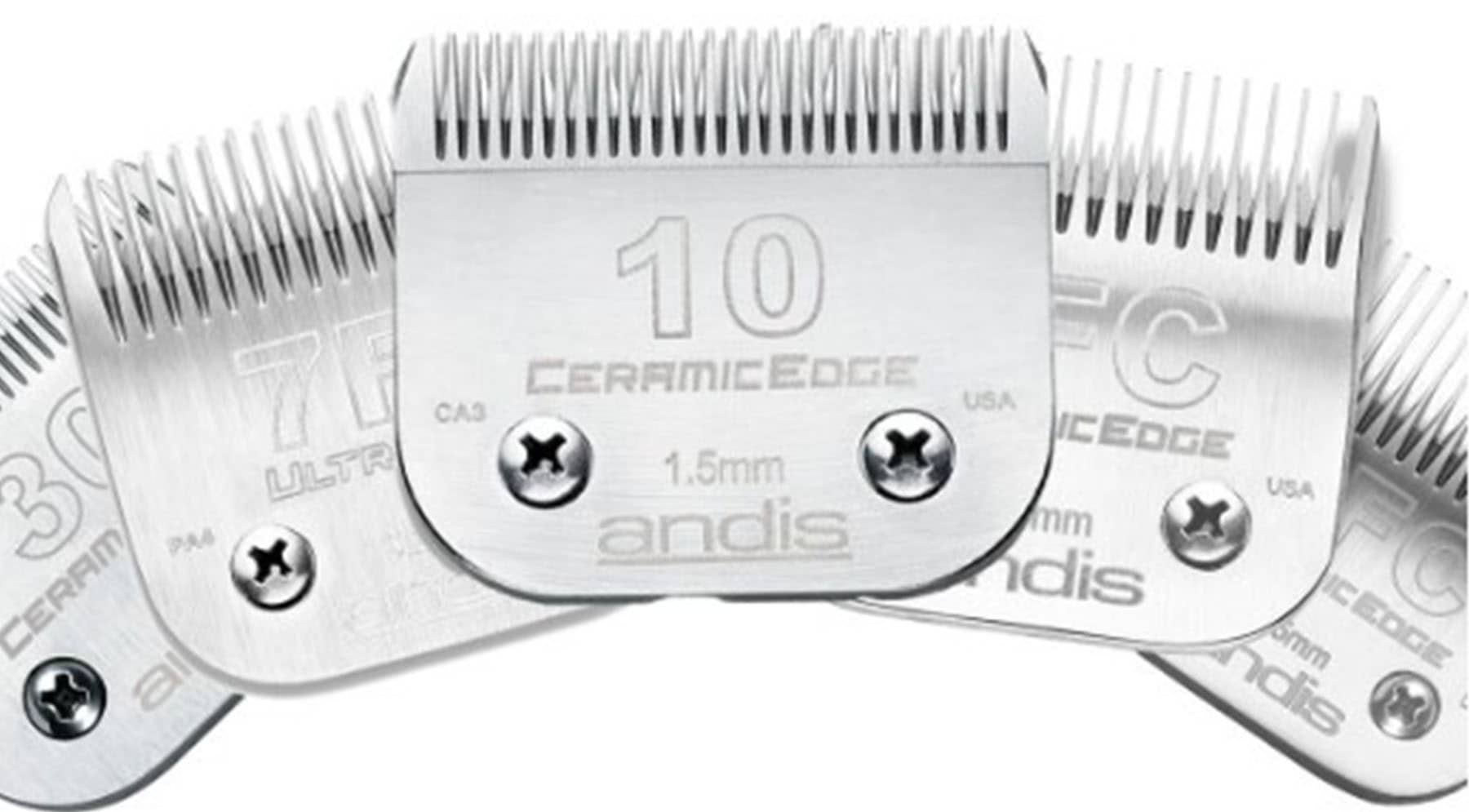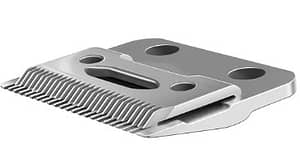In modern barbering, the baber focuses on staying ahead of trends and perfecting techniques to survive in this industry. And what plays a pivotal role in achieving excellence? The types of tools you use, particularly the – hair clipper blades.
Each plays a vital role, from the traditional barber scissors to the latest instruments. However, among them are the hair clippers. These utilize modern technology and ease the hairstylist’s and barbers’ jobs. But one feature that experts must check on is the clipper blades: every snip and every trim is based on the type of blade you choose.
They come in various styles, each with unique characteristics designed to fulfil different needs. As a professional hairstylist, knowing these blade types is not just a skill; it’s a necessity, resulting in desired haircuts.
We will look at clipper blade types and categorize them into different classes to achieve the perfect fade, taper, or detailed design.
KBDS Adjustable Blades Compatible with Wahl Clippers
Check Price on AmazonDifferent Types of Hair Clipper Blades
Hair clippers come with multiple blades, each defining its features and working.
Hair clipper blades are classified based on blade style and movement mode in hairstyling. There are various other types, but here we will look at the details of these two main categories. Firstly, in blade style, we have:
- Taper blades, with their thick and crescent-shaped design
- Fade blades with a flat and thin finish
- Wedge blades balance taper and fade.
Moving on to the mode of movement, clipper blades are further categorized into:
- Fixed/Static Blades
- Moving/Cutting Blades
This dual classification enhances our understanding of clipper blade functionalities and assists both barbers and enthusiasts in making informed hairstyling choices.
Let’s know all these varieties.
Taper Blade
The taper blade style offers easy control with its C-shaped design. This supports the fading motion and improves wrist control. Its thick build adds an extra layer, making it an excellent choice for new barbers and those who still need to be confident about fading.
Example
Wahl Super Taper Clipper
Fade Blade
This thin and precise blade is the go-to for creating bald fades. Its design lets you get as close to the skin as possible, ensuring a seamless transition between skin and hair. The result is a clean, sharp finish that leaves a lasting impression. It’s designed for detailing around the ears or shaping the hairline.
Example
BaByliss PRO Titanium Fade Blade
Wedge Blade
The Wedge blade is between the taper and fade blades. It’s the all-in-one solution for those seeking versatility. It’s an ideal choice for precise and smooth fading and blending.
Example
Wahl 2228 5-Star Wedge Blade
Now, we will move to the next type.
Fixed/Static Blades
These blades are the ones that do not move. They act as the combs of your clipper and lift and guide the hair into the cutting path. They serve for an even and controlled trim. This dual-blade confirms that no hair is left untouched, resulting in a uniform length and a seamless finish.
Example
StyleCraft Replacement Fixed Stainless Steel Taper Hair
Moving/Cutting Blades
These blades move back and forth. The horizontal motion between fixed and moving blades brings flawless, salon-quality finish and cutting action. This shift gives a smooth and continuous trimming, effortlessly gliding through the lifted hair.
Example
Ceramic Moving Trimmer Blade
Other Types of Clipper Blades
Balding Blades (Zero-Gap Blades)
These are better for a sleek, close-cut style, creating a nearly bald appearance. Ideal for those aiming for a clean, polished look.
Skip Tooth Blades
It offers versatility in hair blending and transition between short and longer lengths. Their unique design facilitates smooth changes, making them perfect for balanced and blended styles. Whether refining fades or creating textured looks, these Blades deliver accuracy and flexibility.
Finishing/Full Cut Blades
They have evenly-spaced teeth and provide a smoother finish with every pass. Perfect for refining and finalizing haircuts, they ensure a polished and professional appearance.
Wide/T-Blades
These blades are designed to cover more area with each pass, making them suitable for bulk cutting and faster hair removal. A wide blade covers larger hair sections, speeding up your barber routine.
Types of Materials Used for Hair Clipper Blades
Black Diamond Carbon
DLC is a name that resonates with strength and durability. This material infuses blades with the robust properties of carbon that glide effortlessly through hair and stand the test of time.
Barbers choose this material because it maintains sharpness over extended periods, ensuring consistent and reliable performance with every trim.
Andis 64070 UltraEdge Carbon-Infused Steel Detachable Clipper Blade
Check Price on AmazonExamples
StyleCraft Replacement Moving Black Diamond Carbon Slim Deep Slim
Stylecraft Black Diamond DLC FAPER Clipper Blade
Japanese Premium Stainless Steel
It is renowned for its exceptional quality and elevates premium hair clippers, scissors, and shears precision. Japanese steel sets the gold standard with equal resistance against corrosion, giving longevity and durability. It experiences a seamless cutting process due to its design and easy handling. Lightweight that reduces fatigue during prolonged use.
This steel keeps sharpness for longer durations and has better toughness and resistance to damage. Proper care minimizes the chances of corrosion, so your tools remain the same over time. Moreover, it has powerful strength.
Examples
GAMMA+ Protege Cordless Hair Clipper
StyleCraft Replacement Fixed Stainless Steel Fade Hair
Gold Titanium
These blades show a combination of strength and lightweight design. These are hypoallergenic, giving a comfortable, irritation-free experience for sensitive skin. It is a go-to choice for maintaining a clean and sterile grooming environment because it is easy to sanitize. Further, they are versatile, meeting all your hair-cutting needs.
Examples
Gamma+ Fixed Gold Titanium Fade Replacement Clipper Blade
BaBylissPRO Hair Clipper Gold Titanium Fade Blade FX8010G
Ceramic Blade
These are made from a high-tech ceramic material that resists heat and stays sharper for an extended period, delivering precision with every cut. Such blades exceed steel in durability, resisting rust and eliminating the need for constant coolants or anti-rust liquids. They are good in strength and brittleness. Although available in premium, they are cost-effective over time, requiring fewer replacements and maintenance than steel blades.
The material’s lightweight nature and resistance to friction contribute to a smooth cutting experience. Barbers prefer precise cuts, and client comfort often goes with them. It is an ideal choice for those with sensitive scalps.
Examples
Andis CeramicEdge Clipper Blade
Shernbao A5 SS-Ceramic Clipper Blade
Choosing Hair Clipper Blade Types
Going for the right clipper blades involves thoughtful considerations. Asses blade quality, size, and type to align with your needs. Factor in the clipper’s weight, checking it’s comfortable for longer use. Look into customer reviews for valuable insights into actual performance. Make an informed decision by weighing these aspects, securing a blade and a grooming companion tailored to your preferences. Simplify your choice with a complete guide that makes sure your clipper blades meet your expectations.
FAQs
Blades made from high-quality materials such as stainless steel or titanium are the best suited for trimmers. Both materials have high durability and corrosion resistance. T-blades with curved edges serve well for detailed work around ears, necks and beards, while square blades excel in general shaving. Many household trimmers have self-sharpening stainless-steel blades, ensuring longevity and rust resistance. An alternative option is a ceramic blade for swift work. Some models even offer the added durability of titanium blades, providing a comprehensive array of choices for users seeking an ideal trimming experience.
The blade structure of clippers involves a larger bottom blade feeding hair into a top-cutting blade. In contrast, trimmer blades are shorter, thinner, and finer, often featuring small shark-like teeth. Clippers typically house stronger motors than trimmers, providing more power for bulk hair cutting on larger areas. Trimmers may require additional attachment guides to balance their shorter blades. Clippers excel in handling bulk hair cutting on larger areas but aren’t designed for extremely close cuts to the skin. On the other hand, trimmers specialize in tasks such as edging, outlining, dry shaving, and light shaping on smaller areas, catering to distinct grooming needs.
Clippers have a variety of blades, each serving a specific purpose:
Skip Tooth Clipper Blades are ideal for blending short areas with longer lengths. Finishing/Full Cut Blades ensures a smoother finish with evenly spaced teeth. Wide/T-Blades have wider cutting surfaces for larger breeds or quicker stripdowns. Surgical Blades is designed for accurate and complex detailing.
T-Blade has curved edges for easy handling, perfect for detailed work around ears, necks, beards, and moustaches. Its unique shape improves mobility. On the other hand, U-shaped blades excel in close cuts, contours, edge lining, and sharp outlines.
Conclusion
Professional hair clippers with the right blade types and materials enable barbers to deliver a consistent and quality experience for clients with different hair textures.
Refrain from getting stuck in the various blades when picking a clipper. Ask yourself a few plain questions: What’s my budget? How often will I use these clippers? What’s my intended use? Aim for value for money by setting a price range and finding the best clipper blade within that budget.
Hair-cutting accessories like quality blades save time and increase the satisfaction of both the barber and the person in the chair.


